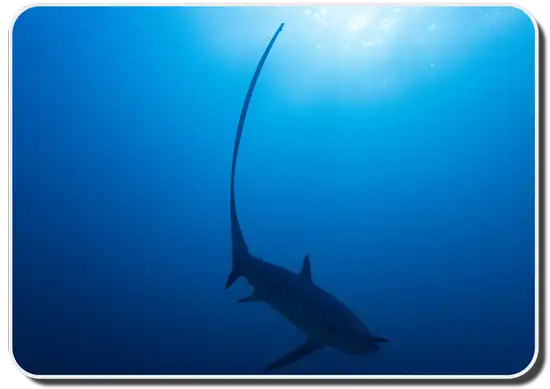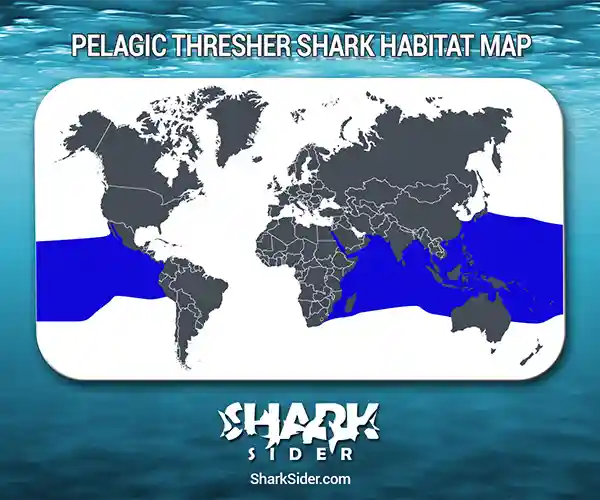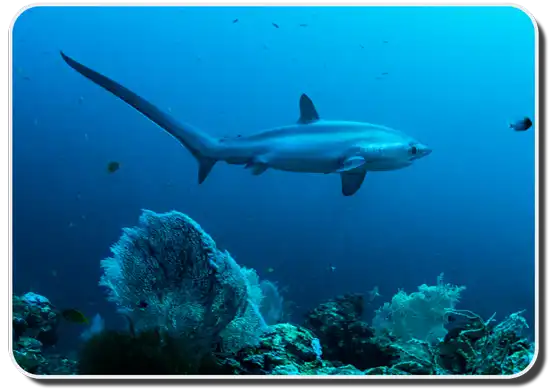The pelagic thresher shark is one of three members in its genus and is often confused with the common thresher shark. It is the smallest of the three thresher sharks.

Pelagic Thresher Shark Scientific Classification |
|
| Kingdom | Animalia |
| Phylum | Chordata |
| Class | Chondrichthyes |
| Order | Lamniformes |
| Family | Alopiidae |
| Genus | Alopias |
| Scientific Name | A. pelagicus |
Description
These sharks are 10-10.8 ft long and weigh 153.3-194.9 lb. The record for the longest male and female pelagic thresher sharks is 11.5 ft and 12.5 ft, respectively.
It has a fusiform build, a narrow head, and a small conical snout. Their teeth are tiny, with 21-22 rows of teeth on each jaw. Their caudal fins are incredibly long, almost as long as the rest of their bodies like other thresher sharks.
They are dark blue from above and white from below. However, after death, their color rapidly fades to gray.
Where do they live

As a result of confusion in regards to other thresher sharks, the distribution of these sharks isn’t accurately known. But so far, it has been verified to live in the Indo-Pacific, spotted in the Arabian Sea, California, China, the Galapagos Islands, the Hawaiian Islands, New Caledonia, northwestern Australia, the Red Sea, South Africa, southeastern Japan, and Tahiti.
Pelagic thresher sharks live on the open sea at around 492 ft, but they have occasionally traveled inshore.
Behavior
Hunting
Like other thresher sharks, they use their tails to attack potential prey, which includes barracudinas, escolars, and lightfish. They will try to isolate their target by circling around them and stun them by suddenly striking them with their tail.
Breaching
These sharks have been observed to leap out of the water on several occasions, with one specimen doing so five times in a row.
Interaction with other species
These sharks will regularly visit “cleaning stations” operated by cleaner wrasses, which may be why they are sometimes seen in shallow waters where these fish live.
Reproductive
They give birth to 2 pups at a time, being born at relatively large sizes of 5.2 ft – around 43% of the mother’s length. This makes them less susceptible to predation.
Sexual maturity is observed in females at 9.2–9.5 ft long and 8-9 years, while males do so at 8.9–9.2 ft and 7-8 years. The exact lifespan of this shark has yet to be determined, with the only confirmed ages being 14 years for males and 16 years for females.
 Adaptations
Adaptations
Their tails are used to stun both prey for consumption and predators to escape from them.
Interactions with humans
These sharks are not considered a threat to humans because of the small size of their teeth, and they are very timid. They are considered game fish and are often caught as bycatch. Due to little information about them, the IUCN lists this shark as “Endangered” or “EN”.
